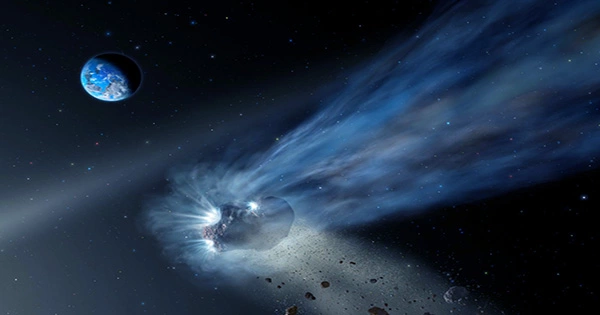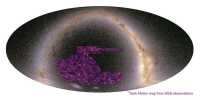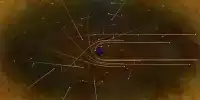Using the Hubble Space Telescope, astronomers have made additional observations of the gigantic Comet C/2014 UN271 (Bernardinelli-Bernstein), confirming what they predicted based on earlier data: this object is extremely enormous when it comes to frozen space rocks. According to Hubble observations, Comet Bernardinelli-Bernstein is the biggest comet ever found, as published in The Astrophysical Journal Letters. Comets have long tails that can extend millions of kilometers, yet their nucleus is a solid ice and dust “dirty snowball.”
This comet’s core is roughly 130 kilometers (80 miles) across, a third wider than the previous record holder, comet C/2002 VQ94, and around the size of the state of Rhode Island, according to prior observations from the Atacama Large Millimeter/submillimeter Array. In a statement, the paper’s principal author, Man-To Hui of the Macau University of Science and Technology, stated, “This is an incredible object, given how active it is when it’s still so distant from the Sun.” “We had a feeling the comet would be rather large, but we needed the best data to be sure.”
The nucleus of the comet is currently estimated to be 50 times bigger than the nuclei of most known comets, with a mass of 500 trillion tons. That’s a hundred thousand times more mass than a normal comet discovered far closer to the Sun, according to NASA. The comet is on its way from the Oort cloud, a large area at the frontier of the Solar System that is home to numerous cometary entities.
As they travel closer to the Sun, frozen space rocks begin to heat up and spew dust and gas. Comet Berardinelli-Bernstein is coming closer to the Sun, although it will never come closer than 10.9 AU (astronomical units, or 1 billion miles) from the Sun. That’s about just beyond Saturn’s orbit, and it’ll arrive there in 2031. The trick to measuring it was figuring out how to tell the difference between the comet’s dusty coma and its core. Even though it’s nearly 3 billion kilometers away from the Sun and hundreds of degrees below zero, the Sun’s weak light is enough to sublimate carbon monoxide on its surface.
Because the comet is still too far away to measure the nucleus directly, the observations were compared to a model that enabled the coma to be removed and just the nucleus to be estimated. The comet also contains an extremely dark nucleus, according to co-author David Jewitt, “blacker than coal,” which was also found in Comet 67P, which Rosetta visited. These size measurements will be fine-tuned when more observations are made.
“This comet is essentially the tip of the iceberg for many thousands of other comets that are too weak to observe in the further reaches of the solar system,” said Jewitt, a planetary science and astronomy professor at the University of California, Los Angeles. “Because it is so brilliant at such a great distance, we’ve always assumed it must be a massive comet. We may now say with certainty that it is.” The comet’s path is nearly 90 degrees from the plane of the Solar System, where the orbits of the eight planets are placed. It is nearly half a light-year distant from the Sun and has been plunging inward for about a million years due to its eccentric orbit.















